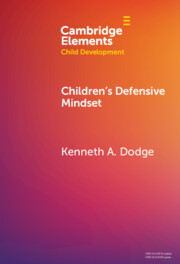1068 results
Chapter 6 - Desolation Is Everywhere
-
- Book:
- Just Following Orders
- Print publication:
- 25 July 2024, pp 168-194
-
- Chapter
- Export citation
Chapter 14 - Intergenerational Trauma
- from Section 3 - Key Concepts for Biosocial Research
-
-
- Book:
- The Handbook of DOHaD and Society
- Print publication:
- 27 June 2024, pp 166-173
-
- Chapter
-
- You have access
- Open access
- HTML
- Export citation
Chapter 27 - Disability in DOHaD and Epigenetics
- from Section 6 - Future Directions
-
-
- Book:
- The Handbook of DOHaD and Society
- Print publication:
- 27 June 2024, pp 300-311
-
- Chapter
-
- You have access
- Open access
- HTML
- Export citation
Chapter 7 - Understanding the Role of Trauma and Dissociation in Youth Responses to Climate Crises
- from Part I - Conceptual Foundations of Climate Distress in Young People
-
-
- Book:
- Climate Change and Youth Mental Health
- Print publication:
- 13 June 2024, pp 130-147
-
- Chapter
- Export citation
Chapter 21 - Future Directions
- from Part II - Multidisciplinary Perspectives on Youth Climate Distress
-
-
- Book:
- Climate Change and Youth Mental Health
- Print publication:
- 13 June 2024, pp 403-419
-
- Chapter
- Export citation
Memory Scripts and Life History in the Shadow of Brazil's Dictatorship
-
- Journal:
- Journal of Latin American Studies , First View
- Published online by Cambridge University Press:
- 03 June 2024, pp. 1-25
-
- Article
-
- You have access
- Open access
- HTML
- Export citation
What If Nice Terrorist Attack Would Have Happened in Milan? Drawing a Disaster Plan for Mass Casualty Incidents Involving the Pediatric Population
-
- Journal:
- Disaster Medicine and Public Health Preparedness / Volume 18 / 2024
- Published online by Cambridge University Press:
- 30 May 2024, e94
-
- Article
- Export citation
Chapter 16 - Inflammation and Metabolic Issues in Mood Disorders
-
-
- Book:
- Clinical Textbook of Mood Disorders
- Published online:
- 16 May 2024
- Print publication:
- 23 May 2024, pp 163-171
-
- Chapter
- Export citation
Examining the role of emotion and alexithymia in cognitive behavioural therapy outcomes for posttraumatic stress disorder: Clinical implications
-
- Journal:
- The Cognitive Behaviour Therapist / Volume 17 / 2024
- Published online by Cambridge University Press:
- 23 May 2024, e15
-
- Article
-
- You have access
- Open access
- HTML
- Export citation
Sex-dependent differences in vulnerability to early risk factors for posttraumatic stress disorder: results from the AURORA study
-
- Journal:
- Psychological Medicine , First View
- Published online by Cambridge University Press:
- 22 May 2024, pp. 1-11
-
- Article
-
- You have access
- Open access
- HTML
- Export citation
Attachment theory: survival, trauma, and war through the eyes of Bowlby
-
- Journal:
- Irish Journal of Psychological Medicine , First View
- Published online by Cambridge University Press:
- 22 May 2024, pp. 1-3
-
- Article
-
- You have access
- HTML
- Export citation

Children's Defensive Mindset
-
- Published online:
- 14 May 2024
- Print publication:
- 06 June 2024
-
- Element
- Export citation
7 - The Impact of Stress
-
- Book:
- The Legal Brain
- Published online:
- 08 May 2024
- Print publication:
- 09 May 2024, pp 73-87
-
- Chapter
- Export citation
Towards the correlates of stressful life events as precipitants of obsessive-compulsive disorder: a systematic review and metanalysis
-
- Journal:
- CNS Spectrums , First View
- Published online by Cambridge University Press:
- 30 April 2024, pp. 1-9
-
- Article
- Export citation
Brain Injury Associated Shock: An Under-Recognized and Challenging Prehospital Phenomenon
-
- Journal:
- Prehospital and Disaster Medicine , First View
- Published online by Cambridge University Press:
- 29 April 2024, pp. 1-6
-
- Article
-
- You have access
- Open access
- HTML
- Export citation
‘Things that shouldn’t be’: a qualitative investigation of violation-related appraisals in individuals with OCD and/or trauma histories
-
- Journal:
- Behavioural and Cognitive Psychotherapy , First View
- Published online by Cambridge University Press:
- 29 April 2024, pp. 1-15
-
- Article
-
- You have access
- Open access
- HTML
- Export citation
Prehospital Surgical Cricothyrotomy in a Ground-Based 9-1-1 EMS System: A Retrospective Review
-
- Journal:
- Prehospital and Disaster Medicine , First View
- Published online by Cambridge University Press:
- 23 April 2024, pp. 1-4
-
- Article
- Export citation
7 - Fast Tracks to Dying Young
- from Part II - The System
-
- Book:
- Toxic Stress
- Published online:
- 18 April 2024
- Print publication:
- 18 April 2024, pp 127-150
-
- Chapter
- Export citation
Chapter 6.2 - Post-traumatic Stress Disorder
-
-
- Book:
- Seminars in General Adult Psychiatry
- Published online:
- 04 April 2024
- Print publication:
- 18 April 2024, pp 314-323
-
- Chapter
- Export citation
Trauma diagnostic-related target proteins and their detection techniques
-
- Journal:
- Expert Reviews in Molecular Medicine / Volume 26 / 2024
- Published online by Cambridge University Press:
- 11 April 2024, e7
-
- Article
-
- You have access
- Open access
- HTML
- Export citation



